This was published 5 years ago
Travel tips and advice for the Caribbean: It's the last great tropical paradise on Earth. So why is it ignored by Australians?
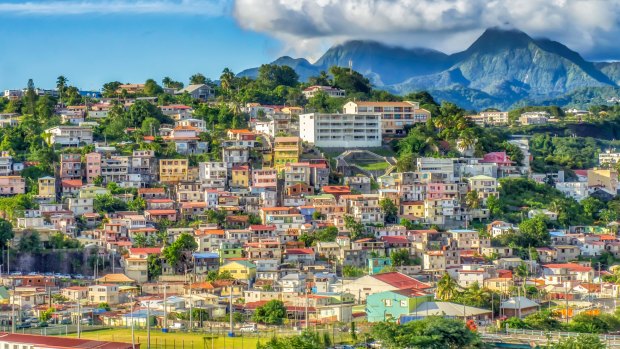
The colourful hillside houses of Fort-de-France, the capital city of Martinique.Credit: Shutterstock
For Australians, the Caribbean tends to conjure faraway images of azure seas and sun-kissed beaches and chilled-out characters sipping rum, grooving to reggae and calypso and playing cricket. These stereotypes are a reality in parts of the region.
But there's so much more to the Caribbean. Whether you're a history buff, nature lover, foodie or adrenaline junkie, you'll find plenty to entertain you in this wonderfully diverse region, which includes the snaking Caribbean coast of the Americas and more than 7000 islands infused by an extraordinary cultural melting pot.It's possible to explore the Caribbean independently, taking inter-island flights and ferries, and staying in ritzy spa resorts (or guesthouses and B&Bs), but cruising is the way to go, giving you a flavour of the region's diverse treasures in hassle-free comfort.
You're spoiled for choice, whatever your budget, as every major cruise line, from Celebrity and Royal Caribbean to Seabourn and Regent Seven Seas, offers voyages in what is the world's most popular cruise destination. You can embark at ports in Florida and other US states or from exuberant hub-islands like Puerto Rico or Barbados.
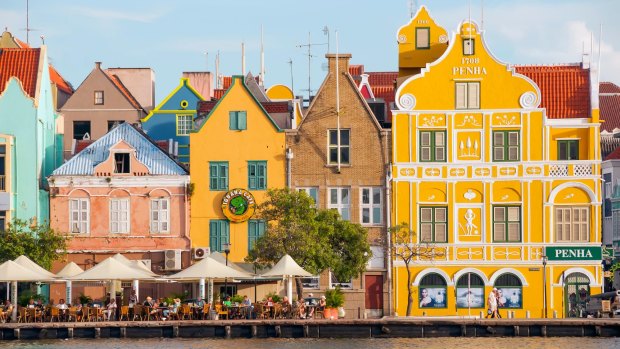
Dutch architecture and cafes line the waterfont on the Punda side of Willemstad in Curacao.Credit: Alamy
Despite its exotic appeal, with the exception of Cuba, which many of us see as a region in itself, few Australians visit the Caribbean. According to CLIA (Cruise Lines International Association), of the 1.34 million Australians who took a cruise in 2017, only about 28,000 sailed in the Caribbean, or a little over 2 per cent.
"The reasons are largely geographic," says Joel Katz, CLIA's managing director Australasia & Asia. "Australians have a good choice of tropical island destinations on their doorstep, easily accessible without requiring long-haul flights. But there's enormous potential for Australians in the Caribbean. Australians are increasingly becoming repeat cruisers – meaning more and more are looking to sample new places – and the Caribbean also provides a lot of scope to combine a cruise with land travel in other countries nearby, like the US, Canada and in Latin America."
Katz believes many Australians might not realise how diverse the region's islands are. "The influences of different cultures from Spain, Britain, France, the Netherlands, Africa and Latin America have made for very vibrant and distinct island identities," he says. "And the beauty of the Caribbean is that its popularity with other nationalities has made it a very well-established destination – the infrastructure is excellent, the choice of destinations is broad and the variety of different cruise styles is fantastic."
The best time to cruise is between late-November and May (outside the hurricane season), although it's busier, and the prices peak, during US and European school holidays. Cruises last anything from three days to a month, but most itineraries are 7-14 days.
The region is often split into cruising categories: western Caribbean, which could typically include destinations such as the Bahamas, Cayman Islands, Mexico, Belize, Dominican Republic and Jamaica. Southern and eastern Caribbean cruises usually feature islands east of (and including) Puerto Rico – and this is arguably where the Caribbean is at its most varied and enthralling.
Below are some of the best islands to visit and experiences that can be enjoyed either independently, on organised shore excursions or on private tours with charismatic island guides. Do note: many Caribbean nations have their own currencies, but US dollars are widely accepted.
THE ISLAND
PUERTO RICO
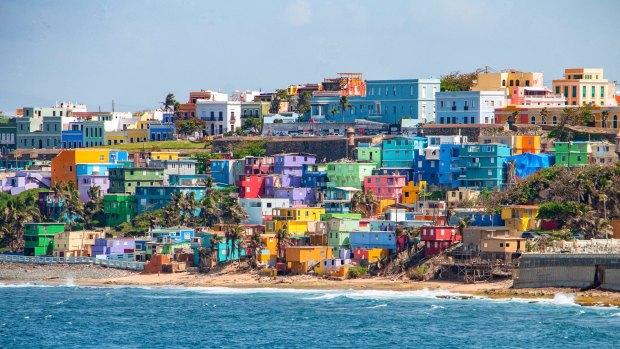
Credit: Shutterstock
WHY GO For the buzzing capital San Juan, which boasts some of the Caribbean's loveliest colonial architecture, plus the liveliest salsa bars outside Havana.
NEED TO KNOW Comprising the big island and several small satellite ones, Puerto Rico was a Spanish colony for almost four centuries before the US seized it in 1898. You'll need an ESTA to visit. English and Spanish are the official languages.
WHAT TO SEE Roam San Juan's three magnificent seaside forts, which have maze-like tunnels, dungeons and walkable ramparts. The old town's cobblestone streets are lined with baroque churches and pastel-shaded mansions, many decorated with murals and converted into craft boutiques, cafes, galleries, seafood eateries and bars made for dancing and sipping pina colada – the rum-fuelled "national" tipple. Across San Juan harbour, Casa Bacardi offers tours and tastings at its huge "Cathedral of Rum" distillery, though craft beer fans may prefer the island's microbreweries. Other Puerto Rican activities include zip-lining in El Yunque rainforest and night kayaking at bioluminescent bays, whose microscopic plankton glow brightly as you paddle.
ESSENTIALS San Juan is the Caribbean's largest cruise port, and many southern and eastern Caribbean cruises begin here. See discoverpuertorico.com
THE ISLANDS
ST KITTS AND NEVIS
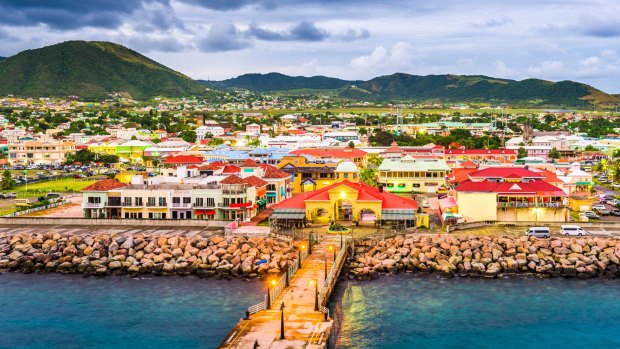
Credit: Shutterstock
WHY GO For the Caribbean's most charming train journey or visit the birthplace of Alexander Hamilton, a founding father of the US and the inspiration behind the hit Broadway musical.
NEED TO KNOW Divided by a narrow channel, the neighbouring islands of St Kitts and Nevis make up the smallest country in all the Americas. It became independent in 1983 after more than 350 years of mostly British colonial rule. English is the official language.
WHAT TO SEE Feel the breeze, enjoy stirring coast and countryside views – plus daiquiris and live gospel-like music from a heart-warming choir – aboard the St Kitts Scenic Railway, which was originally built to transport sugar cane around the island. Alternatively, head up mighty Brimstone Hill Fortress, built by African slaves and nicknamed the "Gibraltar of the Caribbean", or hike an ex-British military jungle trail up Mount Liamuiga (1156 metres), a dormant volcano and St Kitts' highest peak. Over on Nevis, set by Charlestown harbour, is a Georgian-style building-cum-museum that charts the formative years of Alexander Hamilton, who was born here in 1757 and emigrated to New York in his teens.
ESSENTIALS Ships on southern and eastern Caribbean itineraries call in at St Kitts' bustling little capital Basseterre. See stkittstourism.kn
THE ISLAND
MARTINIQUE
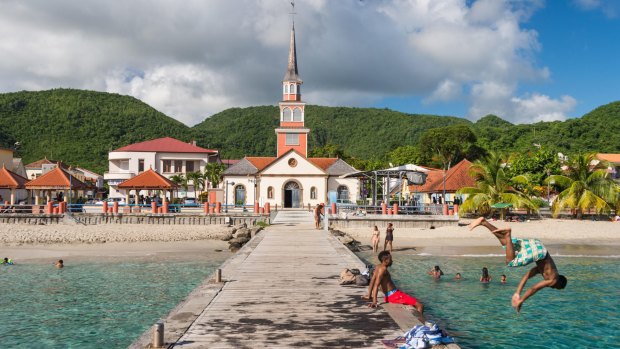
Credit: Alamy
WHY GO To savour the natural beauty of an island that so enchanted Paul Gauguin, who painted here for four months in 1887, and to enjoy Martinican rum and classic dishes such as matoutou de crabe (stuffed crab) and Colombo, a tangy, curry-like meat stew.
NEED TO KNOW Martinique is an overseas region of France and uses the euro. The official language is French but many Martinicans speak Creole, which fuses French, African and native Carib words.
WHAT TO SEE Grand Marche, a 19th-century covered bazaar in capital Fort-de-France. It teems with spices, flowers, fabrics, handicrafts and vendors draped in colourful attire. For some beach time, and lunch, take a public ferry or private charter boat across the harbour to restaurant-dotted seaside communities liksuch ase Les Trois-Ilets, where Empress Josephine, the first wife of Napoleon Bonaparte, was born. To witness the awesome influence of Mother Nature on Martinique, see the ruins of Saint-Pierre. The eruption of nearby Mount Pelee in 1902 turned the island's one-time capital into the "Pompeii of the Caribbean". Saint-Pierre's volcanological museum exhibits objects that survived the disaster.
ESSENTIALS Fort-de-France is a port of call on southern and eastern Caribbean cruises. See martinique.org
THE ISLAND
DOMINICA
WHY GO Luxuriant volcanic landscapes and impressive biodiversity make Dominica an eco-tourism hotspot – and it's one of the few Caribbean islands where you can meet native Carib people.
NEED TO KNOW Formerly occupied by French and British, Dominica became independent in 1978 and English is the official language. About 70 per cent of the island is virgin rainforest and there are 365 rivers – one for every day of the year, say proud Dominicans.
WHAT TO SEE Well-marked footpaths course across this lush mountainous nation, combining to form the 184 kilometre coast-to-coast Waitukubuli National Trail. There are good day and half-day walks in the UNESCO World Heritage-listed Morne Trois Pitons National Park, which has waterfalls, the bather-friendly Emerald Pool and Boiling Lake, a geothermal attraction that's far too sizzling to swim in. On cultural tours, discover the traditions, arts and customs of the indigenous Carib (or Kalinago) people, who were almost killed off following Christopher Columbus' arrival in 1492AD, but now number about 2000 on Dominica's east coast.
ESSENTIALS Roseau, the Dominican capital, is a port of call on eastern and southern Caribbean cruises. See discoverdominica.com
THE ISLANDS
ARUBA, BONAIRE, CURACAO
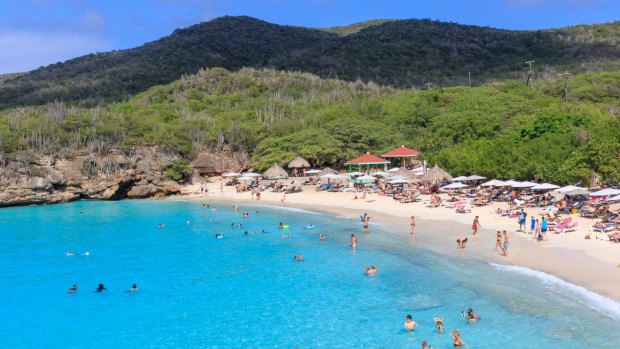
Credit: Shutterstock
WHY GO Whether you're diving or snorkelling with turtles and technicolour fish or whizzing past brilliant-white salt flats in a 4WD, the so-called ABC islands offer a range of pulse-raising highs.
NEED TO KNOW Anchored off the coast of Venezuela, this trio belongs to the Kingdom of the Netherlands. English is widely spoken but Dutch and Papiamento – a Creole language – are the official languages here.
WHAT TO SEE The flamboyant Dutch buildings in the islands' shopping-friendly capitals – Oranjestad (Aruba), Kralendijk (Bonaire) and Willemstad (Curacao) – are begging to be Instagrammed. So, too, is Oranjestad's vintage wooden streetcar, which you can ride, and Bonaire's salt flats, which attract pink flamingos and are fronted by 19th-century "slave huts" (where slaves would rest in between gruelling shifts). Some of the Caribbean's best-preserved coral reefs and dive sites are close to the islands' shores, notably Bonaire National Marine Park, Curacao's Blue Bay and Aruba's Antilla Wreck, a German freighter sunk at the start of World War II.
ESSENTIALS The ABC islands are regular ports of call on southern Caribbean itineraries. See aruba.com, tourismbonaire.com, curacao.com
THE ISLAND
BARBADOS
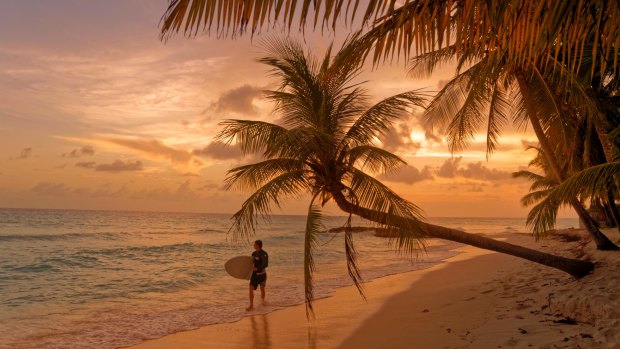
Credit: Alamy
WHY GO Besides a string of stunning beaches, Barbados rewards cricket fans, culture vultures and party animals, while surfers can catch superb waves off the island's east coast.
NEED TO KNOW The Caribbean's eastern-most island, Barbados is dubbed "Little England". It was continuously occupied by the English and British from 1625 to 1966.
WHAT TO SEE No other island has produced as many West Indian superstars as Barbados and they're feted in the Legends of Barbados Cricket Museum. The greatest, Sir Garfield Sobers, is also immortalised in a statue outside the neighbouring Kensington Oval stadium, a 15-minute walk from Bridgetown's cruise terminal. Barbados' rolling green countryside is studded with heritage sites, notably St Nicholas Abbey, a 17th-century sugar plantation with a handsome Jacobean mansion and rum distillery. In Barbados on a Friday night? Hit the weekly festive Oistins' Fish Fry, where Barbadians (or Bajans) and tourists mingle over sizzling seafood, rum punches, ice-cool beers and live DJ tunes.
ESSENTIALS Bridgetown is a port of call (or embarkation hub) for many eastern and southern Caribbean itineraries. See visitbarbados.org
THE ISLANDS
ST VINCENT AND THE GRENADINES
WHY GO To see picturesque filming locations from Pirates of the Caribbean and to linger on dreamy islands that have seduced royals and celebrities.
NEED TO KNOW Gaining independence in 1979, after three centuries of French and British rule, this 32-island nation comprises St Vincent and the islands and cays (small reef isles) of the Grenadines. English is the official language.
WHAT TO SEE In St Vincent's capital, Kingstown, peruse rare tropical plants, flowers and trees – and meet the endangered St Vincent Amazon parrot – in the Caribbean's oldest botanic gardens. Do your best Captain Jack Sparrow impression at Wallilabou Bay, a rustic cove with ramshackle film sets and props from Pirates of the Caribbean: The Curse of the Black Pearl. Sail over to Bequia, a Grenadine island with laid-back vibes, jaw-dropping beaches and top diving and snorkelling, or sample the high life on Mustique, a privately owned island where Princess Margaret, Sir Paul McCartney and Kate and Wills have holidayed.
ESSENTIALS Southern and eastern Caribbean cruises call in at Kingstown. See svgtourism.com
THE ISLANDS
ANTIGUA AND BARBUDA
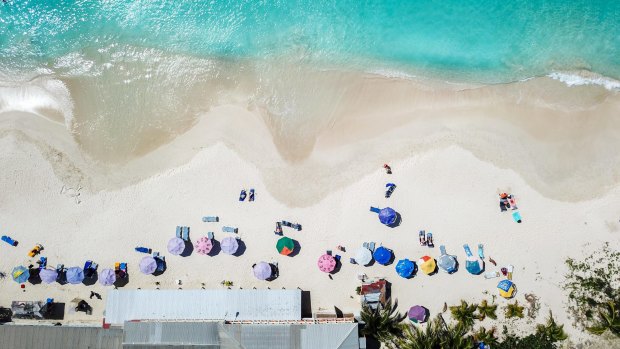
Credit: Alamy
WHY GO To stroll around Nelson's Dockyard – once the naval hub of Britain's Caribbean empire – and to "lime" on some of Antigua's 365 beaches. Liming is a beloved Caribbean past-time that basically involves hanging out (usually with family or friends) and watching the world go languidly by.
NEED TO KNOW The country gained independence from Britain in 1981. While Antigua largely avoided 2018's Hurricane Irma, Barbuda, 50 kilometres to the north, was badly hit and remains in recovery mode.
WHAT TO SEE Sheltered in Antigua's pretty English Harbour, Nelson's Dockyard is UNESCO World Heritage-listed and still a working dockyard, with vintage tall ships and shiny yachts and elegant Georgian-era buildings turned into museums, boutiques, bars and eateries. Guided tours regale (often rib-tickling) tales about the sailors who lived here, including Admiral Horatio Nelson. Enjoy a lovely panorama of English Harbour from Shirley Heights, an old hill-top military lookout. Birders should flock to Barbuda's Codrington Lagoon, where the world's second largest colony of frigate birds have returned post-Hurricane Irma. The males' puffed-out throats resemble bright red balloons during the September-April mating season.
ESSENTIALS Eastern and southern Caribbean cruises call in at St John's, Antigua's capital. See visitantiguabarbuda.com
THE ISLANDS
US VIRGIN ISLANDS
WHY GO For colourful landmarks, cut-price shopping and natural draws on and off shore.
NEED TO KNOW Previously the Danish West Indies, these islands were sold to the US in 1916. They consist of the "big three" – St Croix, St John and St Thomas – and a clutch of smaller islands. You need an ESTA to visit.
WHAT TO SEE The Danes left behind an array of eye-catching relics, such as the vivid red fort of Frederiksted, which is perched by an enticing strip of white sand and tree-shaded seafood shacks in St Croix. Many Danish-built dwellings in St Thomas' capital, Charlotte Amalie, are now duty-free stores and shopping arcades selling jewellery, watches and the like. St John is a walkers' favourite, with about two-thirds of the island taken up by the Virgin Islands National Park. All three islands excel in watersports, from stand-up paddle boarding and diving to jet skiing and kite-surfing.
ESSENTIALS St Thomas, St John and St Croix are popular ports of call on southern and eastern Caribbean itineraries. See visitusvi.com
THE ISLAND
ST LUCIA
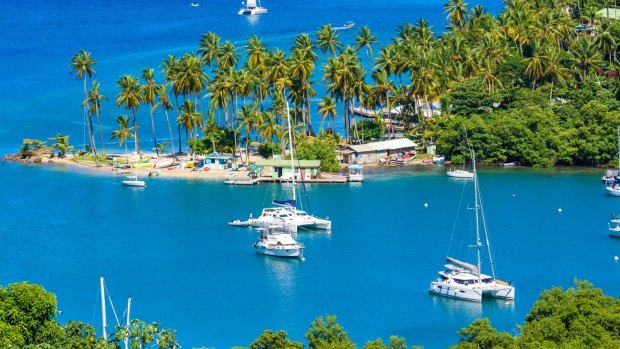
Credit: Alamy
WHY GO To marvel at the Pitons, the twin, jungle-shrouded volcanic spires that rise out of the sea on St Lucia's west coast and are possibly the Caribbean's most iconic postcard image.
NEED TO KNOW The only country in the world named after a woman, St Lucia see-sawed between French and British control, with the flag changing 14 times between 1660 and 1815, when it became a Crown colony until independence in 1979. English is the official language but French-tinged Creole is spoken, too.
WHAT TO SEE Sailing excursions offer entrancing Piton views along with barbecued lobster lunches, snorkelling at secluded coves and stops at quaint fishing villages. Fancy a hike? While daredevils haul themselves up the smaller, steeper Petit Piton by rope, walkers of reasonable fitness can tackle Gros Piton. It's said slaves fleeing sugar plantations would escape their masters by scaling the 786-metre peak and some of their ancestors are now hiking guides here. It's a fairly strenuous two-hour ascent, but the summit views are sublime. Some tours also include a visit to Sulphur Springs, apparently the "world's only drive-in volcano", where you can soothe your aching muscles in mineral-rich mud baths.
ESSENTIALS St Lucia's capital Castries is a port of call (or embarkation hub) on eastern and southern Caribbean itineraries. See stlucia.org
FIVE OTHER MEMORABLE CARIBBEAN EXPERIENCES
THE GREAT BLUE HOLE
Its name coined by Jacques Cousteau, this surreal underwater sink hole is a magnet for scuba divers, part of the barrier reef of Belize, in the western Caribbean. See travelbelize.org
TRINIDAD AND TOBAGO CARNIVAL
The steel pan music that resonates across the Caribbean reaches a crescendo at this vivacious annual street gathering, which is staged prior to Ash Wednesday. See gotrinidadandtobago.com
SINT MAARTEN'S SPLIT PERSONALITY
The southern half of the so-called "Friendly Island" is Dutch, and famed for its duty-free mall, casino and cosmopolitan restaurants. Expect better croissants and baguettes in St Martin on the northern side of the island, which is more tranquil and French. See st-martin.org
SAVOURING THE SPICE ISLE
Nutmeg, cloves, ginger and cinnamon grow in abundance on Grenada, a lush island which also has a booming chocolate industry. Cocoa farm tours and tastings are popular. See grenadagrenadines.com
ANIMAL MAGIC
With 700 islands, the Bahamas boasts heaps of activities, but it's the animal encounters that often beguile visitors, whether it's swimming with pigs or riding horses into the sea. See bahamas.com
FOLLOWING IN THEIR FOOTSTEPS
BOB MARLEY
Make a pilgrimage to the Jamaican icon's former home and recording studio in Kingston, where his old instruments, outfits and records are on display. See bobmarleymuseum.com
SIR VIV RICHARDS
The ex-West Indian captain is the pride of Antigua, and the island's cricket stadium is named after him. "King Viv" is often in attendance when the Windies host international matches. See visitantiguabarbuda.com
IAN FLEMING
James Bond's creator set many of 007's adventures in the Caribbean and Fleming's old winter retreat, GoldenEye, is now a swanky resort on Jamaica's north coast. See goldeneye.com
RIHANNA
The humble Bridgetown street on which the Barbadian singer grew up has been re-named Rihanna Drive. One of her favourite Bridgetown hang-outs is Waterfront Cafe, an ambient riverside spot renowned for its tasty Caribbean cuisine and live music. See waterfrontcafe.com.bb
SIR RICHARD BRANSON
The Virgin boss owns Necker Island, one of the British Virgin Islands, and he rents the whole island out for $US77500 a night (sleeps up to 30 guests). See virginlimitededition.com/en/necker-island
MORE
Steve McKenna was a guest of Celebrity Cruises and also travelled at his own expense.
Sign up for the Traveller Deals newsletter
Get exclusive travel deals delivered straight to your inbox. Sign up now.